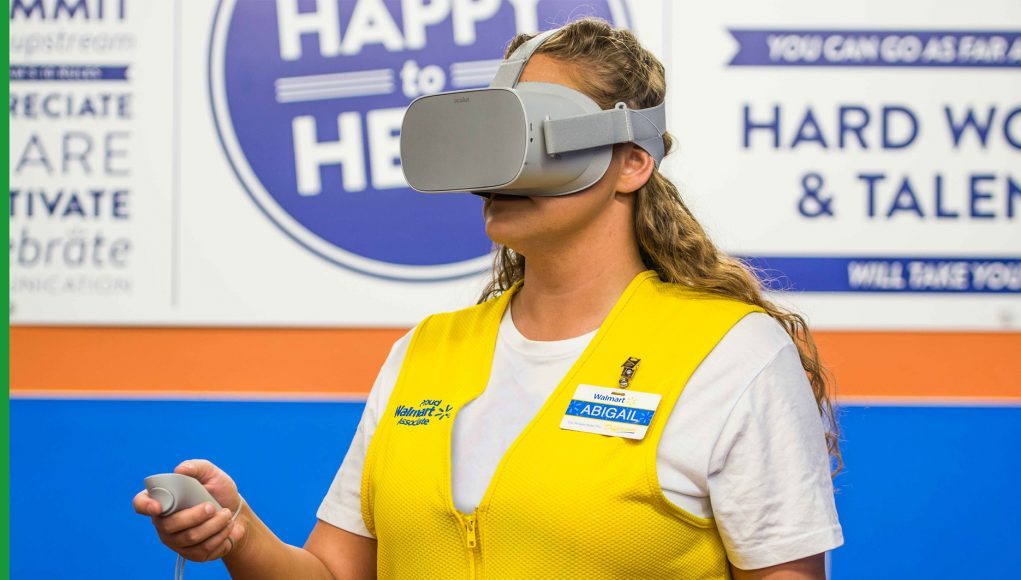Walmart is no stranger to VR, from its nation-wide VR training program, to its recent traveling VR installation to promote How to Train Your Dragon: The Hidden World (2019). Now, the company is putting the technology ever closer to the heart of its business by using it to determine if prospective middle managers have the right stuff to make it up the corporate ladder.
As reported by the Wall Street Journal, Walmart has partnered with Menlo Park-based VR training startup Strivr yet again to create a VR skills assessment program that will help the company promote its mid-level employees.
A prospective candidate dons a VR headset and is tested to see how they respond to a number of situations in VR—everything from an angry shopper to an underperforming worker. WSJ reports that the program tests a worker’s strengths, weaknesses and potential, and is being deployed to stores ultimately with the aim of determining who gets raises and who gets demoted.
While it could sound somewhat dystopian, a comprehensive and impartial test could better help limit traditional biases in the hiring process. Beth Nagel, Walmart human resources market manager for the Pittsburgh area, however calls VR a “touchpoint in our selection process. It’s not a disqualifier,” but rather another tool to help the company substantiate “what we as a manager see in someone as potential.”
“What we’re trying to do is understand the capacity of the individual from a leadership perspective and how they view situations,” said Drew Holler, Walmart’s senior vice president of associate experience.
More surprising still, the program has already been used to assess over 10,000 employees; WSJ reports it’s been used in a new store management structure to help reduce the number of managers needed. In essence, it appears Walmart is looking for better managers that help them reduce overall labor costs.
Strivr also worked with Walmart on their nation-wide VR training program, which launched last year alongside the purchase of over 17,000 Oculus Go headsets by the big-box store. The two companies are also working to further integrate data points such as a worker’s body movement and attention data to get a clearer picture of employee potential. For now though, employees are only assessed on the answers they give, although it’s not hard to imagine in the near future that a company may use any number of data points, such as eye-tracking data, to better approximate what’s going on in their employee’s heads.







